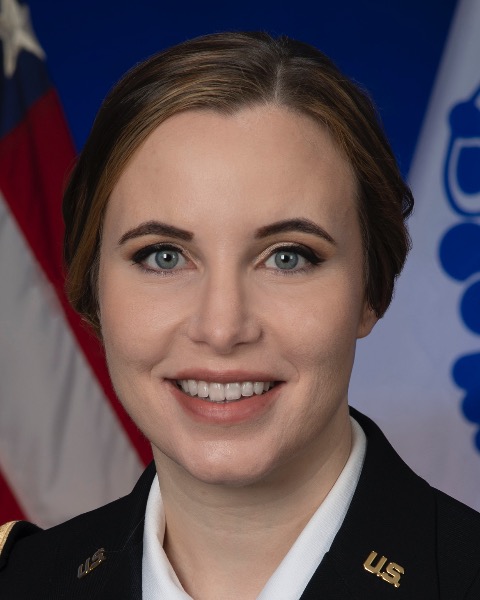Neonatal Infectious Diseases/Immunology
Neonatal Infectious Diseases/Immunology 2
672 - Salivary Sampling as a Noninvasive Method of Monitoring Gentamicin Levels in Neonates
Saturday, April 29, 2023
3:30 PM - 6:00 PM ET
Poster Number: 672
Publication Number: 672.241
Publication Number: 672.241
Theresa M. Urbina, Walter Reed National Military Medical Center, Silver Spring, MD, United States; Blake T. Cirks, National Capital Consortium, Walter Reed National Military Medical Center, Bethesda, MD, United States; Jennifer M. Bencze, Uniformed Services University of the Health Sciences F. Edward Hebert School of Medicine, Bethesda, MD, United States; Henry Goetzman, Walter Reed National Military Medical Center, Vienna, VA, United States; Brian J. Reinhardt, Walter Reed National Military Medical Center, Bethesda, MD, United States; Nicole R. Dobson, University of Pittsburgh School of Medicine, Pittsburgh, PA, United States; Jeffrey Livezey, AFRIMS, Bangkkok, Krung Thep, Thailand

Theresa M. Urbina, DO (she/her/hers)
PGY-6 Neonatal Perinatal Medicine Fellow
Walter Reed National Military Medical Center
Silver Spring, Maryland, United States
Presenting Author(s)
Background:
Gentamicin is a commonly used antibiotic for neonatal sepsis and requires invasive blood sampling for therapeutic drug monitoring (TDM). Previous studies comparing salivary to serum concentrations of gentamicin for TDM have shown promising results in older infants and adults with once-daily dosing. The study aim is to determine if salivary and serum gentamicin levels correlate in neonates, when treated with extended interval dosing as recommended by NeoFax.
Objective:
The primary outcome is the correlation between salivary and serum gentamicin levels at each dosing interval.
Design/Methods:
This single-center, prospective, observational study enrolled 23 infants at Walter Reed National Military Medical Center and prescribed gentamicin from birth to 42 weeks postmenstrual age. Infants were enrolled into one of three groups based on standard NeoFax dosing intervals: 1) 35-42 weeks gestational age (GA) receiving 24-hour dosing, 2) 30-34 weeks GA receiving 36-hour dosing, and 3) ≤ 29 weeks GA receiving 48-hour dosing. Paired salivary and blood samples were collected during clinically indicated blood draws during treatment with gentamicin. Gentamicin levels were analyzed via competitive enzyme-linked immunoassay and compared using Pearson’s correlation.
Results:
30 paired samples from 17 neonates (mean GA 36.3 ± 3.6 weeks), were collected and analyzed. There was a strong correlation between salivary and serum gentamicin concentrations at the 36-hour interval (correlation coefficient of 0.92, r2 = 0.84, p = 0.001) (figure), but no correlation in the 24-hour interval group (correlation coefficient 0.16, r2 = 0.02, p = 0.49). Patient enrollment is ongoing in the 36 and 48-hour dosing interval cohorts.
Conclusion(s):
The preliminary data in this ongoing study shows a statistically significant correlation between salivary and serum gentamicin levels in premature neonates receiving 36-hour dosing, which has not been previously reported. In contrast to published studies, however, there is no correlation in the 24-hour dosing group; we speculate that this may be due to 56% of these patients providing only one study sample, which may not have allowed sufficient time for the positively charged gentamicin to enter and equilibrate with saliva. In conclusion, our interim analysis suggests that salivary sampling may be a promising method of TDM for gentamicin in preterm infants receiving 36-hour dosing to decrease invasive blood sampling. Additional data will be required to clarify the extent to which salivary sampling provides a valid estimate of serum gentamicin levels.
.jpg)
